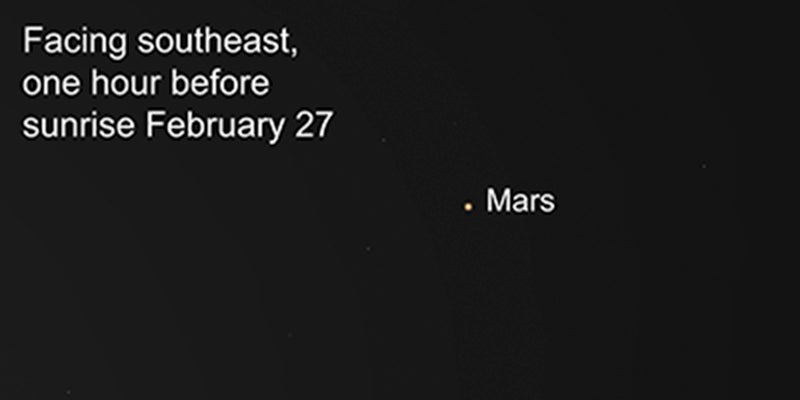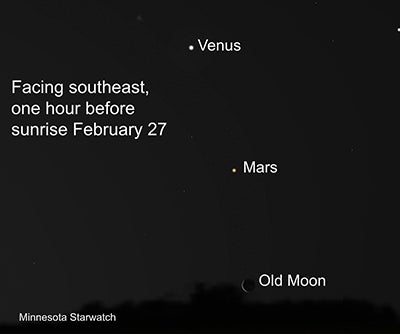Minnesota StarWatch: Brightest stars take to the night skies
Published 5:14 pm Tuesday, January 25, 2022

- Photo provided
|
Getting your Trinity Audio player ready...
|
By Deane Morrison
All month long, the knot of bright winter constellations occupies center stage in the south during the prime early evening viewing hours. This grouping boasts five stars that rank among the top ten brightest in the night sky: Sirius (No. 1), Capella (No. 6), Rigel (No. 7), Procyon (No. 8) and Betelgeuse (No. 10).

Photo provided
At nightfall Sirius shines from Canis Major, the big dog, while above and slightly to the east twinkles Procyon, in Canis Minor, the little dog. Both are near neighbors of the sun, so no wonder they appear so bright. Sitting atop the stellar panoply, Capella, in Auriga, the charioteer, is four times more distant than either Sirius or Procyon. But the two stars in Orion—Betelgeuse, at his right shoulder, and Rigel, at his left foot—hold their own against the others despite being more than 10 times farther away than even Capella.
A waxing moon passes between the horns of Taurus, the bull, on the night of the 10th and between the bodies of the Gemini twins on the night of the 12th. On the 13th, the “head” stars of the twins—Pollux (the brighter) and Castor—form a nearly straight line with the moon. February’s full moon shines from the jaws of Leo, the lion, the night of the 15th and will still be gorgeous when it rises on the evening of the 16th.
In the morning sky, brilliant Venus, in the southeast, spends much of the month climbing toward much dimmer Mars. A waning moon passes Spica, the brightest star in Virgo, the maiden, between the 20th and 21st and visits Antares, the heart of Scorpius, on the 24th. On the 27th, Venus, Mars and an old crescent moon stack up with Mars in the middle. To see all three, look to the southeast just as dawn starts to break.
On Groundhog Day we get a hint of spring. The day was first celebrated as the astronomically based Celtic holiday Imbolc, or lamb’s milk, and heralded the start of the lambing season. It was one of four cross-quarter days falling midway between a solstice and an equinox.
The University of Minnesota’s public viewings of the night sky at its Duluth and Twin Cities campuses have been curtailed due to the COVID-19 pandemic. For more information, see:
• Duluth, Marshall W. Alworth Planetarium: www.d.umn.edu/planet
• Twin Cities, Minnesota Institute for Astrophysics: www.astro.umn.edu/outreach/pubnight
• Check out astronomy programs, free telescope events, and planetarium shows at the
University of Minnesota’s Bell Museum: www.bellmuseum.umn.edu/astronomy
• Find U of M astronomers and links to the world of astronomy at: http://www.astro.umn.edu
1/21/22 Contact: Deane Morrison, University Relations, (612) 721-6003, morri029@umn.edu


